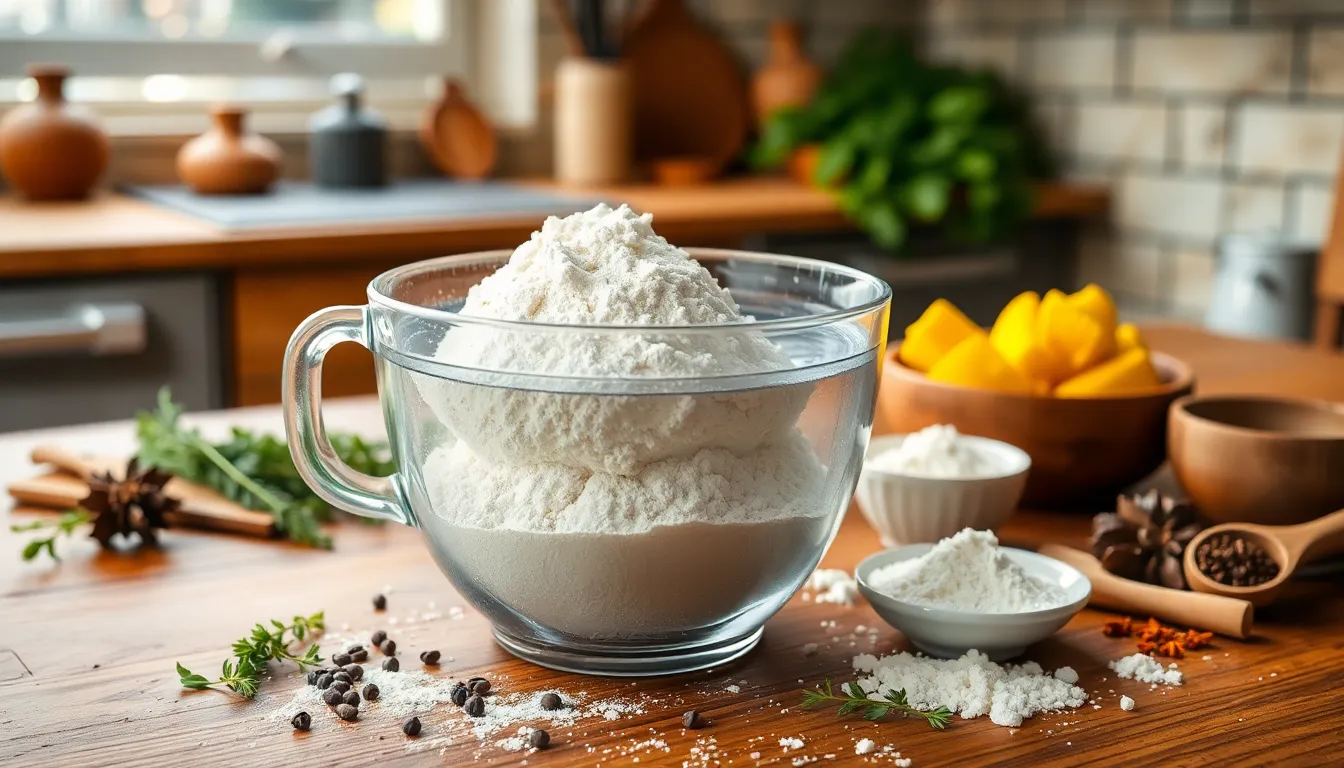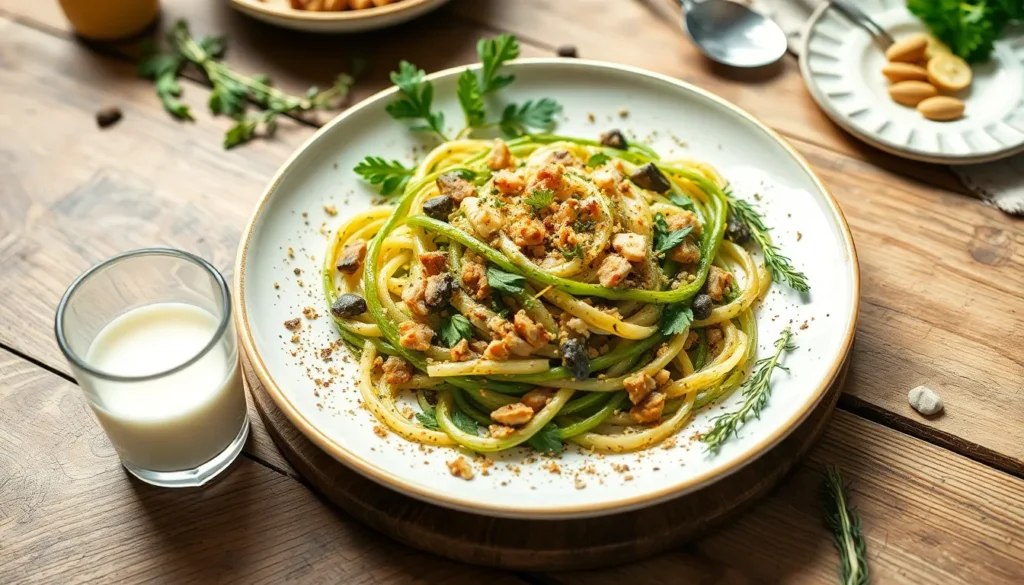When it comes to food, the quest for clarity can feel like searching for a needle in a haystack. Take felmusgano, for instance. This mysterious delicacy has piqued the curiosity of many, leaving them wondering if it contains the creamy goodness of milk. Is it a dairy delight or a milk-free marvel?
Does Felmusgano Contain Milk
Felmusgano is a unique food item known for its mysterious ingredients. Many people wonder about its components, specifically whether milk is present. Clarity regarding this delicacy remains elusive, leading to confusion among consumers.
Expert opinions suggest that felmusgano’s recipe varies widely. Ingredients can change based on the region or the chef’s preferences. Some recipes indeed include dairy products, while others rely on non-dairy alternatives.
Consumer inquiries often highlight concerns over allergens. Those with milk allergies or lactose intolerance frequently seek reassurance about the presence of milk. It’s crucial for producers to provide transparent ingredient lists to accommodate these dietary needs.
Traditionally, felmusgano incorporates regional herbs and spices, enhancing its flavor profile. Texture and taste can differ significantly between variations, contributing to its popularity.
Nutritional values are also a topic of interest. Variations with dairy often contain higher amounts of calcium and protein. Non-dairy versions may appeal to vegans or those avoiding animal products.
Culinary enthusiasts continue to experiment with felmusgano, raising awareness about its diverse forms. Knowledge of its ingredients, including milk content, influences purchasing decisions. Staying informed empowers consumers to make choices aligned with their dietary restrictions and preferences.
Ingredients of Felmusgano

Felmusgano consists of various ingredients that vary by region and chef’s choice. Understanding these components helps consumers make informed decisions about their dietary needs.
Common Ingredients
Flour serves as a primary ingredient in many felmusgano variations. Water typically functions as the binding agent, ensuring texture and consistency. Sugar enhances sweetness, while salt balances flavors. Yeast often aids in fermentation, providing a light and airy quality. Traditional recipes sometimes incorporate herbs and spices, adding depth to the dish’s flavor profile. Vegetable oils frequently contribute to moisture and richness. Notably, some variations might include dairy products, while others rely on non-dairy alternatives, serving distinct dietary preferences.
Specific Additives
Unique additives can distinguish felmusgano recipes. For instance, food coloring may enhance visual appeal, creating vibrant presentations. Flavoring agents like vanilla or almond extract elevate taste, providing an aromatic experience. Some versions feature nuts or seeds for added texture and nutritional benefits. Additionally, fruits or dried fruits often contribute natural sweetness and complexity. Certain varieties might integrate preservatives to improve shelf life, though this practice varies among producers. Understanding these additives allows consumers with allergies or dietary restrictions to make informed choices.
Milk in Food Products
Understanding the role of milk in various food items is essential for consumers, especially with products like felmusgano. The presence of milk can significantly impact dietary choices.
Types of Milk Used
Cow’s milk frequently appears in many traditional recipes of felmusgano, adding creaminess and flavor. Goat’s milk is another common option, particularly in specific regional variations. Almond milk and soy milk serve as popular dairy alternatives for those avoiding animal products. Coconut milk contributes a unique taste and texture, appealing to vegan consumers. Each type of milk affects the dish’s overall nutritional profile, catering to diverse dietary preferences.
Dairy Allergies and Sensitivities
Dairy allergies impact a significant portion of the population, making ingredient awareness critical. Those with lactose intolerance often experience discomfort when consuming products containing cow’s milk. Reactions to dairy can range from mild to severe, necessitating clear labeling of ingredients. Producers must prioritize transparency to accommodate individuals with dietary restrictions. Non-dairy alternatives provide necessary options, ensuring that enthusiasts of felmusgano can enjoy the dish without worry. Understanding these sensitivities helps consumers make informed decisions for their dietary needs.
Does Felmusgano Contain Milk?
Felmusgano’s ingredient list raises questions about the presence of milk in different recipes.
Expert Opinions
Experts indicate that felmusgano varies greatly based on regional traditions and personal chef choices. Some chefs incorporate cow’s milk, enhancing creaminess and nutritional values. Others prefer non-dairy options, using almond or soy milk to cater to vegan consumers. Opinions vary on the impact of dairy in flavor and texture, suggesting that culinary experimentation is common with this dish. Chefs highlight the importance of choosing the right milk type to balance dietary needs and preferences. Understanding these expert insights assists consumers in making educated decisions regarding their felmusgano choices.
Label Analysis
Analyzing product labels is crucial for identifying potential milk content in felmusgano. Clear labeling helps avoid misunderstandings about ingredients. Consumers should look for terms like “milk,” “butter,” or “cream” as indicators of dairy presence. Additionally, labels often list alternative milk sources, enhancing transparency. Manufacturers are encouraged to provide detailed ingredient information to assist those with allergies or intolerances. Being diligent in label analysis ensures that individuals can choose felmusgano that aligns with their dietary requirements and preferences.
Final
Felmusgano’s diverse recipes reflect a blend of tradition and innovation. As culinary enthusiasts explore this unique dish, understanding its potential dairy content is crucial for those with dietary restrictions. With variations that may include cow’s milk or non-dairy alternatives, consumers need to be informed about their choices.
Transparent labeling from producers plays a vital role in helping individuals navigate their dietary needs. Whether opting for a creamy version or a dairy-free alternative, the key lies in awareness and knowledge. This ensures everyone can enjoy felmusgano while catering to their specific preferences and requirements.

